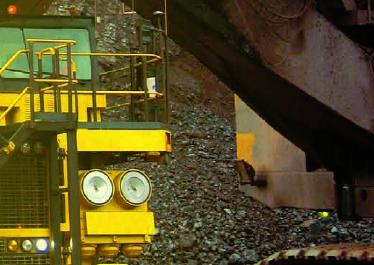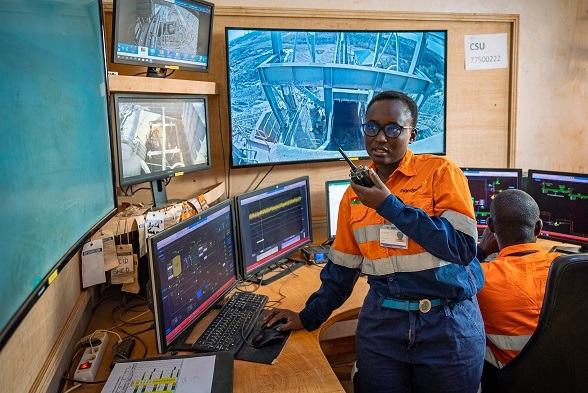
After the acquisition of Mexico’s San Dimas mining properties from Goldcorp, the company is well on the way to achieving its ambition to become a leading intermediate gold producer.
Primero Mining Corp. is a Canadian-based precious metals producer with every intention of becoming a leading intermediate gold producer, as attested by its acquisition from Goldcorp of the San Dimas gold/silver mine in Mexico last year, for a total consideration of $500 million.
Originally known as Mala Noche Resources, the company was renamed Primero Mining on completion of the acquisition in August 2010. As part of the acquisition, Primero assumed an amended silver purchase agreement with Silver Wheaton Corp.
Also coincident with the acquisition was the appointment of Joseph Conway as chief executive officer. As former CEO of Iamgold, Conway oversaw the growth of that company into one of Canada’s leading intermediate gold producers. "Today marks an auspicious beginning for Primero,” he said at the time. “We have now transformed the company into a low-cost gold and silver producer in Mexico. Primero is well positioned as a self-funding, precious metals growth vehicle.
"With the completion of the San Dimas acquisition we will immediately focus on optimizing the mine and consider expansion opportunities,” he added. “In addition we will assess accretive acquisitions in the Americas to create the next intermediate gold producer."
The San Dimas gold-silver deposit is one of the most significant precious metal deposits in Mexico, consisting of three underground gold-silver mines in Mexico's San Dimas district, on the border of Durango and Sinaloa states some 125 kilometers northeast of Mazatlan in central west Mexico. The district was first mined in 1757 by the Spanish, with historical production estimated at 11 million ounces of gold and 582 million ounces of silver—and it’s still producing.
Announcing its 2010 results in January this year, Primero reported mine production of 24,700 gold equivalent ounces1for the fourth quarter, representing an increase of 14 percent over the previous quarter, and annual production of 100,500 gold equivalent ounces for the full year, (37,300 gold equivalent ounces attributable to Primero). Mill throughput increased by 15 percent over the third quarter, averaging 1,830 tonnes per day.
"We were encouraged by our operating results during the fourth quarter," said Eduardo Luna, Primero’s EVP & President for Mexico. "The mill has a 2,100 tonne per day capacity, which was achieved on several days during November and December. Now we have established that the mill can successfully operate at capacity it allows us to concentrate on increasing underground development at the mine."
The 2010 results prompted Primero to revise its outlook for 2011. It now expects gold equivalent production at San Dimas to increase in 2011 and nearly double from current levels by the end of 2013. Mine development plans have been aggressively increased to achieve growth objectives and justify a mill expansion in 2012.
"We are pleased with the company's operating performance in the fourth quarter," said Conway. “We were able to increase throughput significantly over the third quarter and achieved our revised production guidance for the year. We have also recently completed a thorough review of operations and revised the mine's three-year plan. We have determined that there is a significant opportunity for Primero by aggressively advancing underground development and exploration drilling. Given continued positive results from the high grade Sinaloa Graben, the company plans to expand the mill from 2,100 tonnes per day to 2,500 tonnes per day during 2012. We expect 2011 to be a year of transition as we increase development spending by 50 percent and double exploration spending. Higher grades are anticipated in 2011, resulting in a 15 percent increase in gold equivalent production. The full impact of the Sinaloa Graben discovery will not be seen until 2012 and 2013. The company's goal is to increase production at San Dimas to approximately 200,000 gold equivalent ounces per year by the end of 2013, up nearly 100 percent from 2010 levels."
San Dimas consists of five ore zones or blocks: San Antonio West, Sinaloa Graben, Central Block, Tayoltita and Arana Hanging Wall block. All mine production is processed through the Tayoltita mill.
All of the mines are underground operations using mechanized cut-and-fill mining methods. After milling, cyanidation, precipitation and smelting, 1000 ounce doré bars (a semi-pure alloy of gold and silver) are poured and then transported to refineries in the United States. Over the last ten years previous owners invested in a major capital program that has significantly upgraded tailings management, will increase production and achieve a lower cost structure in the future.
As well as gold, San Dimas is also a significant low-cost producer of silver. Under Goldcorp’s ownership, 100 percent of the mine’s silver production went to Silver Wheaton for around $4 an ounce. Primero has renegotiated the purchase agreement so it can benefit from selling some of its silver at spot prices. The revised agreement includes the first 3.5 million ounces plus 50 percent of the excess silver produced until 2014, and then the first 6 million ounces plus 50 percent of the excess produced thereafter, based on the anniversary of the acquisition (August 6), not the calendar year. With an estimated average 7.1 million ounces of silver being produced at San Dimas between 2011 and 2014, this gives Primero an estimated 1.8 million ounces of silver to sell at spot prices, potentially $20 million in extra cash flow per year.
On its journey to become a leading mid-tier gold producer, Primero has embraced a commitment to responsible mining, which means providing a safe and healthy workplace for its employees and contractors, protecting the environment and sharing a mutually beneficial relationship with local communities.
The mine’s previous owner, Goldcorp, has well established sustainability reporting processes and has left a legacy that Primero intends to continue. “Our operations will be judged against the three pillars of sustainability—economic achievement, community engagement and environmental stewardship,” the company says.
Economic achievement will result from providing quality competitive products, maximizing earnings and reducing operating costs, but also by investing in the economic and social development of the communities in which the company operates. Primero is actively engaged with local communities to identify economic, training, social and development priorities. Its objectives are to minimize the impact its operations may cause to the environment and practice the progressive rehabilitation of areas impacted by its activities. www.primeromining.com
*
1 “Gold equivalent ounces” is a term used where a mine produces another metal other than gold. The figure is calculated from actual sales, and in this case includes silver ounces converted to a gold equivalent, based on a ratio of the average commodity prices received for each period.













